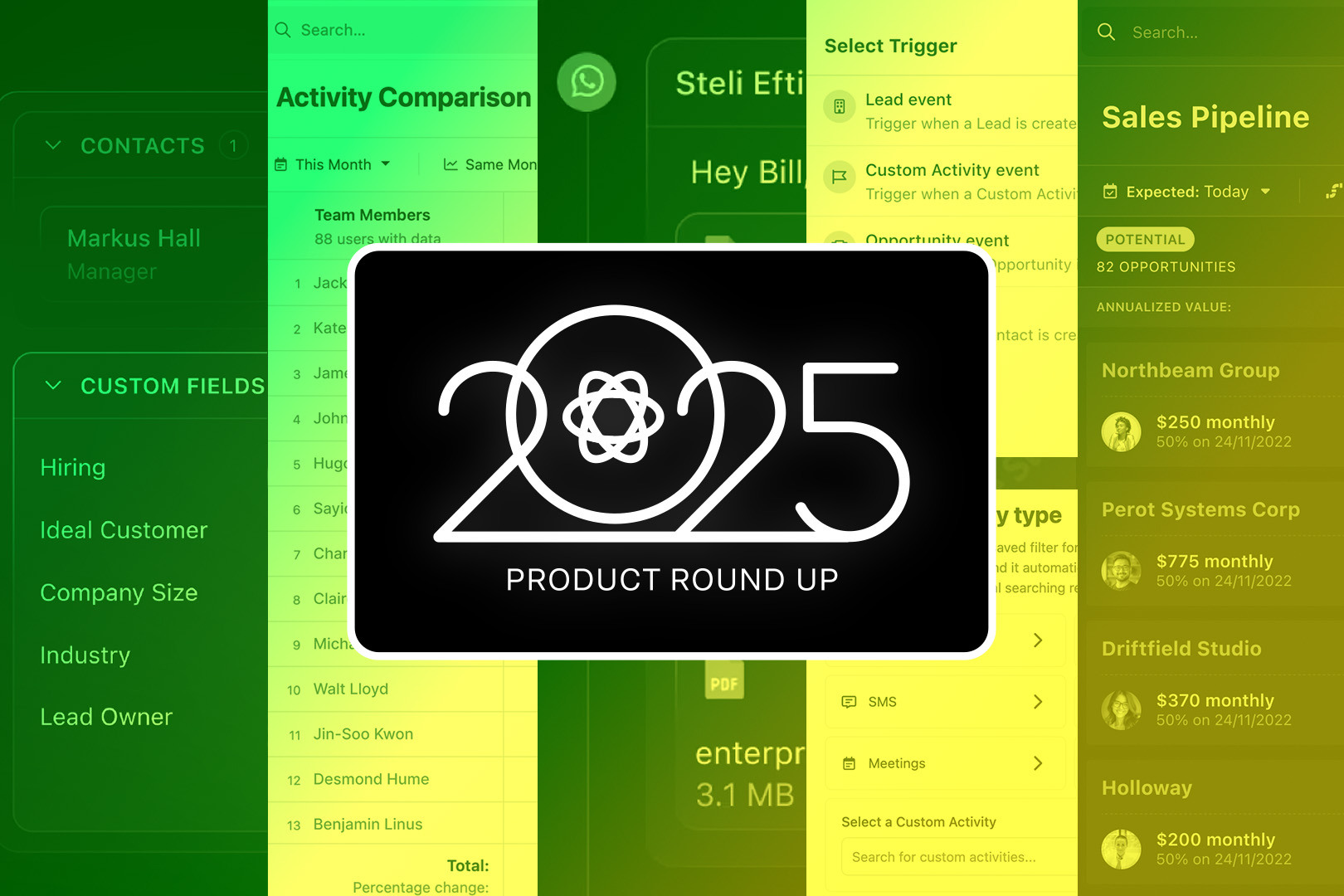You’ve worked hard to earn this deal.
You paid the time, dazzled them with your offer, and got a signed contract. Now, it’s time to onboard that client.
When selling consulting services, your offer isn’t tangible, so it can be hard to know exactly how to start when working with new clients.
However, having a clear new client onboarding process will help your business run more smoothly and improve your brand's reputation.
Not sure how to do it? We’ve got you covered.
We talked with eight pro sales consultants who are currently crushing it and got insights into how they onboard new clients to their consultancy.
You’re about to learn:
- Six strategies for new client onboarding from pro consultants
- How to build your consulting onboarding process
6 Strategies for New Client Onboarding From Pro Consultants
As you read through these tips, you’ll notice something: they’re all unique.
There is no definitive way to onboard new consulting clients, so you’ll have to pick and choose the ideas and strategies that work best for your unique business.
That said, let’s dig into these ideas:
1. Tailor it to Your Personality
When we asked pro sales consultant and entrepreneur Scott Leese about his client onboarding workflow, he responded, “I’m not super formal. I don’t have this fancy onboarding process.”
Instead, here are the basics that Scott sticks to:
“I spend time before I take on a client to make sure they’re my ideal customer profile. And once we’re aligned, I give them a list of things we need to build, such as messaging and templates. We either co-author these things or, if they’ve already built some, they’ll send it to me, and I’ll audit it. We have meetings every week, and most of the work is done asynchronously from there.”
For Scott, this process works and has been part of building a seven-figure consultancy.
2. Brainstorm a Strategy Alongside New Clients
Your process as a consultant may not involve specific, step-by-step actions from start to finish. In many cases, a consultant has to sit down and truly understand what’s happening at the company before they get started.
Here’s what Alberto Nodale of Nodale Consulting told us about his process:
“I have a standardized process to qualify people and make sure I can help them. Once that’s clear, we have a strategy session.”
In this second call, Alberto digs into questions like
- What exactly are their pains?
- How could we come up with solutions to that?
- How can we train the team?
- Do they think the team is suitable for coaching?
Once they’re ready to move forward, Alberto will continue with the standardized onboarding process he’s developed. “All the reps receive a form to fill out that asks what they’re struggling with and what they feel good with. This helps me have a personalized view of the head rep so that I can help every person in the group as an individual.”

3. Talk to the Higher-Ups as well as the Daily Grind Workers
Mor Assouline works specifically with sales teams to improve their product demo process. Here’s how he explains his new client onboarding workflow:
“I get on a call with the founder to make a discovery. I ask about the health of their product, business, and industry, and then I’ll talk about their internal sales process. After that, I’ll tell them if we’re a good fit.
“Once they’re signed on as a customer, they’ll put me in touch with their AEs. Then, I’ll get on a call and do discovery with the AEs. Sometimes, they’re not as open with the founder, but they’ll be more open with me. We get on a first call and do a coaching session on a demo.”
Kevin Ramani, a sales consultant for B2B tech founders, has built a similar consulting onboarding process:
“Typically, onboarding is a week, and it is very tailored. I'll do one-on-one interviews with the individuals responsible for sales and the overall leadership team.”
“Here’s why,” Kevin explains. “For instance, a company might be struggling because they’re closing some deals but feel they’re not growing fast enough. That could be a sales tactics problem or a sales strategy problem. But sometimes, and I would argue more often than not, that is just a symptom, and the root cause is bad decision-making on the part of the founders. And I need to suss that out to help make those changes.”
4. Package Your Client Onboarding Process
“I came from SaaS,” explains Josh O’Brien of RevShoppe. “So when we started RevShopped, I thought: how do we package this up?”
With this SaaS mentality, Josh runs a very straightforward onboarding process. He looks at
- Pain points
- Messaging strategy
- Communication between the sales engagement platform and other systems
“It’s easy to find three to five pain points,” he continues, “and we can prioritize these. From there, we build a business case and scope out the project.”
“After that, it’s passed to our project delivery team. Essentially, we’ve mapped out the hierarchy of stakeholders in the project, and we’ll either go through stakeholder interviews or surveys to discover workflow gaps, operational inefficiencies, and audits on data and messaging.”
With so many moving pieces, how does this process stay structured?
“Thank goodness for Asana,” says Josh. “It’s our lifeline. We run everything through that. So from day one, we can show the client what the next 12 weeks will look like.”

5. Create an Automated Process
Automation can be a powerful tool to help speed up your new client onboarding process. Michael Halper of SalesScripter took this a bit further:
“I’ve created an app,” he explains. “I have an app called SalesScripter that you can use to create your scripts. This is a web-based version of me.”
“Before, I would go through this process with clients, interview them for up to two hours, and ask them about their business and sales messaging. Once I have that information, I can plug that into templates that can be reused repeatedly.”
“So, I just thought of a way to build all the questions I normally ask into a webpage. You can answer them independently, and your answers are used to populate the templates.”
“Once that’s done, many clients will continue the process with me, and then the software can create a sales playbook for them.”
5. Analyze and Plan a Clear, Simple Path Forward
“We typically do some form of gap analysis before we start,” says Iain Swanston of Klozers. “Then we can establish upfront if there’s a fit.”
“From there, what we do is simple. We are great believers in keeping things simple,” Iain adds. “We suggest starting on a couple of main areas in inbound and outbound sales: Google and LinkedIn.
"Once you’ve mastered those, you can move out onto other channels, but in that initial phase, those are the building blocks. There are no two bigger channels for B2B than Google and LinkedIn.”
For Kevin Ramani, the process is similar: “I do what is called an assessment,” he says, “where I do a deep dive into the business, the entire sales process, and an evaluation of the team.”
6. Build on the Foundation Your Clients Already Have
Jake Dunlap of Skaled works with emerging and enterprise clients to transform their sales org. That said, he recognizes that starting from scratch doesn’t always make sense.
“Here’s our process,” he says. “Our clients probably already have 60-80% of what they need to be successful. They just need someone to help pull it all together and drive it home.”
“We try to preserve as much of the internal processes and language as possible, versus just repeating a cookie-cutter process we’ve put hundreds of other companies through.”
How to Build Your Own Consulting Onboarding Process

Ready to build your process for onboarding new clients? Check out these steps to create a consultant onboarding checklist that works for your business.
(Plus, swipe and customize this client onboarding checklist from our friends at Process Street.)
Step 1. Be Clear About Your Ideal Customer Profile
We can’t stress this enough—having an ideal customer profile is your business's foundation for success.
As a consultant, you need to know exactly what companies you’re selling to, which roles are your main POC in those companies, the industries they cover, and the type of help they need from you.
If these criteria are not established, your consultancy will vacillate and change pitch to appease every client, regardless of fit.
Once you have a clear customer profile, you can qualify new clients according to those criteria, focusing your time and energy on the people you can help.
Step 2. Know What You Can and Can’t Offer
“We establish upfront if there’s going to be a fit and if the solution we’ll implement will resonate with the buyer,” says Iain Swanston. “Because it doesn’t matter if you’ve got the best solutions in the world—if the buyer doesn’t resonate, it’s going to be an uphill battle.”
Clients will come along that is a perfect match in everything except one key point. Maybe they’re looking for more than you can provide or are asking for coaching and consulting in an area where you feel less confident.
Don’t offer more than you’re willing to give. Set boundaries and know where to draw the line. If you encounter a common ask you’re unwilling to offer, help them find another solution to work alongside what you’re doing with them.
Step 3. Take the Time to Get to Know Their Business and People
One common thread in all the experiences above is that a good consultant takes time to understand their clients before jumping into action.
While you may have developed a great strategy and process to get results for your clients, you must never forget that every business is unique. When you don’t take the time to get to know your clients’ businesses, you could end up doing extra work or plowing over work they’ve already done.
Leave a better impression by taking the time to get to know your clients.
Step 4. Favor Simplicity Over Perfection
It's easy to get carried away, especially when first starting as a consultant. The thrill of seeing results from your work and getting caught up in the company's day-to-day can tempt you to keep pushing for more.
But as a consultant, simplicity will always be your friend.
Coming into a new company, you’ll probably see many things that must be changed or adjusted. Don’t try to tackle the whole picture on day one—instead, work with them to make some small but high-impact changes. If the consulting relationship continues over time, you can tackle bigger issues.
Onboard New Clients Like a Pro 😎
Pro sales consultants like Jake Dunlap, Kevin Ramani, Alberto Nodale, and others quoted here have a transparent process for onboarding each new client their consultancy gets.
When you have a simplified, repeatable process for your consultancy, you can take on more work and worry less about the minutia.












